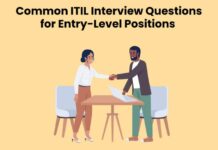Sortation systems have a fascinating history. One pure that’s Americana at its core. In this article, we’re going to tell you a bit about that history as we dive deep into what warehouse sortation systems are, how they have revolutionized distribution centers and the processes they ultimately improve.
What are sortation systems?
The story of sortation systems in warehouses began as an offshoot of another industry. These types of systems were not created or thought out with distribution centers in mind. Nope. These types of automated systems were crafted, engineered, and field-tested at your local post office.
The granddaddy of today’s Sortation systems, a type of automated system that’s used for order fulfillment, started as tech employed to sort mail and parcels at postal sorting centers. They were, and are still used, to sort mail and parcels by postal code or zip code.
The first sortation systems were introduced in the 1970s and they were designed to automate the sorting process. Back when mail, as we know it, was still very much in vogue and e-mail wasn’t even a word, post offices were struggling to keep up with the influx of letters and parcels and whatnots. They needed a game-changer, and that game-changer was the sortation system.
The system worked by using a series of rotating drums that would spin around and then release mail into a bin corresponding with its destination postal code or zip code. These drums were set up in an assembly line fashion, which allowed for easy automation of the process.
After a couple of years more updated tech was introduced — today, there are many different types of sortation systems available on the market, including those with robotic arms that can grab mail from a conveyor belt and place it into bins as well as those with scanners that can read barcodes on packages.
It’s important to understand how e-commerce and huge online retail stores like Amazon basically reshaped the way products were shipped. Up until a couple of years ago, the heavy lifting when it came to shipping was done by the US postal system — Presently, to maintain cheaper rates and new shipping speeds, businesses have had to stop outsourcing the process, or at the very least help it out.
They had no other choice but to hijack those sortation systems – that postal offices tried and tested – and adapt them to their infrastructure.
What types of sortation systems are there?
Warehouse sortation systems are essential for any warehouse. They help with the storage and retrieval of goods. There are many different types of warehouse sortation systems, but they can be generally categorized into two categories: manual and automated.
Manual sorting is an old system that requires a lot of manpower to operate. It is not very efficient and it doesn’t scale well, which means that it cannot be used in large warehouses. Automated sorting is more efficient because it uses machines to do the work instead of people. The machines can also do the job much faster than humans, which makes them more cost-effective as well.
Sortation systems processes
In a nutshell, a sortation system identifies items on a conveyor system and diverts those items to a specific location. How does it direct them? It depends on the systems you have in place and the different tech you’ve employed in your warehouse. But at its core, the system simply IDs a package and then moves it along to its next location.
Sortation systems, if properly applied can do wonders for the following order fulfillment stages:
Receiving
Applying automated sortation systems during the receiving process can really up your game. How?
- Return: sortation systems, based on carton ID or package info can deliver items to specific stations based on orders from your WMS. They can return it to vendors, put it away into stock, sort it to fulfill an open order, or send it out to be destroyed.
- Putaway: sortation systems can efficiently remove items and put them away so they can be palletized and simply packed into reserve storage.
- Cross-docking: inventory can be funneled off, depending on order status, to different departments so they can be consolidated with other goods.
Picking & Packing
Picking and packing are some of the most labor-intensive steps when it comes to order fulfillment. For operations that depend on manual labor and not automated tech, this means that human workers are strolling around picking things up and carting them off to different departments — this is expensive since it puts pressure on your shipping times and your worker’s wages.
Sortation systems can augment and completely change the way you approach the two crucial steps of your operation. They can help workers be more productive, giving you a chance to better divert them to zones that need their input. And, they can help you sort items into totes and consolidate them — saving you time, cartons, shipping containers, packing tape, poly bags, etc.
Shipping
A good warehouse sortation system can help skip parcel hubs and direct packages faster to specified shipping zones. They presort parcels, which gives you a greater advantage since it cuts back on transit days and shortens total order cycle times — this means lower freight cost, orders processed at a quicker rate, and happier customers.
The benefits of automated sortation in warehouses or Distribution Centers.
Automated sortation systems have substantial benefits amongst them:
- less walking.
- No more double handling of orders.
- Optimized picking strategy.
- Faster order processing.
- More efficient use of floor space.
- Less damaged products.
- Fewer accidents.
- Reduce labor costs.
- Ability to increase orders volumes without having to invest in more personnel.








